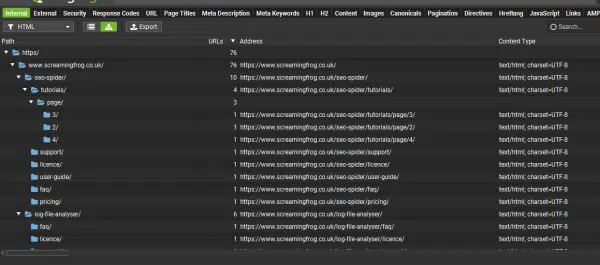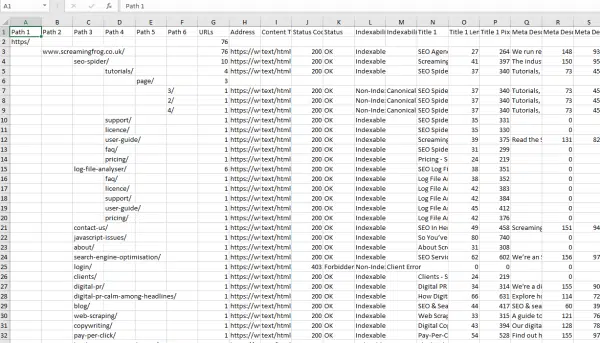Product page SEO: A complete guide
Optimize your ecommerce product pages for higher SEO visibility, traffic, and sales. Get insights on URL structure, UGC and more.
Optimizing product detail pages (PDPs) is crucial for ecommerce websites. Well-optimized product pages can increase organic traffic, boost conversions, and grow revenue.
This comprehensive guide covers key elements of effective product page optimization, including:
- Structuring clear, descriptive product page URLs.
- Optimizing image file names, alt text, and schema.
- Writing compelling product descriptions.
- Incorporating user-generated content (UGC) like reviews.
- Adapting product info for international audiences.
1. Product page URLs
Clear, descriptive URLs enhance both user experience and visibility. Ideally, they should describe what content a page holds.
It is important to optimize URLs for clarity and user-friendliness and not to just stuff keywords. Remember, their primary purpose is to guide users.
A good product page URL should look like this:
https://brand.com/category/subcategory/color-product
Improve your site structure by identifying uncategorized product pages
Some products may be directly linked to the domain and listed alongside main categories.
The risk is that those pages can have the same treatment as the main categories and create mess since some products will not be displayed properly.
To find these uncategorized products:
- Crawl your website using Screaming Frog.
- Then can click the directory tree icon on the Internal tab.

- You will then see the internal tab turned into a directory tree.

- Click Export. This will export the site in a directory tree format in a spreadsheet.

In this spreadsheet, you can now see your main categories and subcategories and find products that might have been uploaded without a category, as well as other irregularities on the site structure of your website.
2. Image optimization
If you work for a brand that prioritizes minimal text on their pages (like luxury brands), or if you’re required to have no text on key pages, then images become crucial. They serve as the equivalent of your text, conveying content to search engine crawlers. This makes image optimization a must in your SEO strategy.
Image URLs
High-quality images are essential for showcasing products. The file names of these images should be descriptive and include:
- Domain
- Type of product
- Color or size
- Main features
This is a perfect example from Chanel:
https://www.chanel.com/images//t_one///q_auto:good,f_auto,fl_lossy,dpr_1.1/w_840/small-classic-handbag-black-grained-calfskin-gold-tone-metal-grained-calfskin-gold-tone-metal-packshot-artistique-vue1-a01113y01864c3906-9535401164830.jpg
This URL describes the following product to Google:

Image alt text
Alt text is probably the most important content component for images. This element will help search engines understand what the image is about.
Make sure to optimize image alt texts for web accessibility, aiding visually impaired users. This is not an opportunity for keyword stuffing.
Example: Chanel Medium Double Flap Caviar Leather
- Product page URL
https://www.chanel.com/us/fashion/p/A01113Y01864C3906/small-classic-handbag-grained-calfskin-gold-tone-metal/ - Image alt text
Img alt="Small Classic Handbag - Black - Grained Calfskin & Gold-Tone Metal - CHANEL - artistique view 1 - see full sized version"
Image schema
Implementing schema on your images and across product pages enables you to offer content and context to the search engines to understand our pages.
Dig deeper:
- How to deploy advanced schema at scale (Search Engine Land)
- Google image SEO best practices (Google Search Central)
3. Product descriptions
Once your customers are influenced by an ad or a campaign on TikTok, you only have a short time to get them to stay and convert once they land on your product page.
Along with product images, descriptions are crucial to make a customer buy or abandon the idea of buying.
Here are some important consider for your product descriptions:
- Pop-ups: Some categories may need to add pop-ups, for instance, food products that provide a reminder on allergies. However, if you are not in a health-related or high-risk category, then try to delay a pop-up. If you have a high-value item, showing too many pop-ups might not convince people to buy it; instead, it might make them change their minds and leave the website without buying anything.
- Keep your product descriptions clean and easy to read. Too much information, buttons, labels or discount info will overwhelm the customer and will, again, result in abandonment.
- Avoid content duplication for similar products. In case of potential duplication or close similarities, make sure canonicals are in place to differentiate product descriptions and pages.
- Make sure to have hreflangs in place for product descriptions in the same language but for various different languages and international versions of your site.
- Avoid keyword stuffing. It looks spammy and won’t help you. Include the minimum necessary keywords, but don’t go to extremes. Remember, your product descriptions are meant to convince users, not just Google.
The Velvet Powder Puff became a viral sensation at the beginning of 2023. The product description is precise and a great sales pitch that also includes a how to wear guide, pushing an influenced costumer to convert immediately.

Dig deeper: How to make your ecommerce content more helpful
AI and product description generators
Using product description generators can be a double-edged sword. On one hand, they offer efficiency and consistency, especially for businesses with a large inventory of products. However, the downside is that these generators may lack the unique, human touch that can make product descriptions more engaging and persuasive.
If you handle a large website with hundreds of products, chances are you probably can hire a copywriter. If so, do so instead.
If you are a smaller site, it’s best to write them yourself or take some time. Using generative AI can be OK as long as these product descriptions are checked by a copywriter or brand manager and they are signed off before going live.
Otherwise, you will only create content for the sake of having it on a product page, and it can result in abandonment.
Dig deeper: How to use ChatGPT to generate product descriptions at scale
4. User-generated content on PDPs to boost organic and direct traffic
UGC, such as customer reviews and Q&As, can significantly enhance SEO. They provide fresh, relevant content, which search engines favor. Encouraging UGC on product pages can also increase trust and engagement among users.
Create a content hub for your User Generated Content, you can then create other pieces of content, such as research or data and use these resources to pitch journalists or papers to get coverage and links.
Example: Charlotte Tilbury Flawless Filter Foundation

This is a highly converting product page. It is a product page aimed at pushing an already influenced customer to convert rather than satisfy a search engine.
User-generated content, for some niches, is what makes their pages highly converting. In the case of this foundation, seeing the product in many shades and many types of skin in real pictures is the final push to get a customer to convert.
Note: Only use this type of content if it’s relevant to your niche. Otherwise, it will seem out of place and instead of converting, it might lead to abandonment.
Dig deeper: Why ecommerce brands must showcase authentic E-E-A-T
5. Global adaptation
Global adaptation involves more than just translation. It includes:
- Cultural customization: Understanding cultural nuances and preferences in different regions. Do not use machine translators; if you use agencies, ensure they have target country copywriters who can adapt your content to your target country.
- Local SEO: Using region-specific keywords and phrases.
- Pricing strategy: Adapting pricing to reflect local market conditions and purchasing power.
- Payment methods: what payment methods are effective in your target country? Is it paypal? Or Klarna? Do people prefer installments?
Dig deeper: 15 SEO localization dos and don’ts: Navigating cultural sensitivity
Make your product pages useful for customers
Product page optimization is an ongoing process that requires a strategic, multifaceted approach. The tips above provide an excellent starting point for enhancing your PDPs.
Focus on creating pages that engage users while also appealing to search engines. Test different optimization strategies and refine them based on performance data.
Optimized product pages will become powerful drivers of organic growth and revenue with time and consistency.
Opinions expressed in this article are those of the guest author and not necessarily Search Engine Land. Staff authors are listed here.
Related stories
New on Search Engine Land